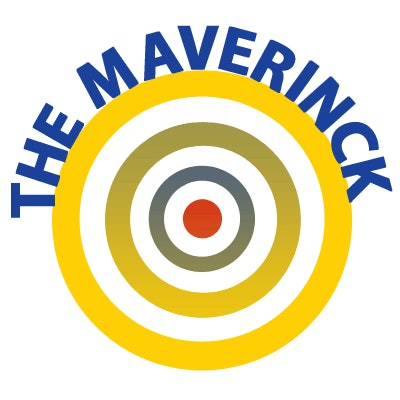
Safety is one of the main factors in the development of a new contrast agent. Of course, the main goals are the improvement of tissue contrast and characterization, and overall diagnostic sensitivity and specificity. But you always have to take into account biodistribution, tolerance, stability, elimination, metabolism, and toxicity. Still, at the end of the process, there is no absolutely safe contrast agent.
In July, the European Medicines Agency (EMA) confirmed the restrictions on some linear gadolinium agents and the suspension of the authorizations of others. This is due to the incidence of nephrogenic systemic fibrosis (NSF) some years ago, followed by the findings that gadolinium depositions were found in brain tissue, although there is no evidence that gadolinium in the brain causes any harm or remains there forever.
 Dr. Peter Rinck, PhD, is a professor of diagnostic imaging and the president of the Council of the Round Table Foundation (TRTF) and European Magnetic Resonance Forum (EMRF).
Dr. Peter Rinck, PhD, is a professor of diagnostic imaging and the president of the Council of the Round Table Foundation (TRTF) and European Magnetic Resonance Forum (EMRF).What could it cause? Dementia? If you check the literature, gadolinium is not mentioned, but aluminium is, as well as magnetic fields: "There is at least moderate evidence implicating the following risk factors [for dementia]: air pollution; aluminium; silicon; selenium; pesticides; vitamin D deficiency; and electric and magnetic fields."1 Choose whatever pleases you ...
Even when all the NSF cases are considered and included, contrast-enhanced MRI is far safer than contrast-enhanced CT.
The overall incidence of adverse reactions with MR contrast agents is approximately 0.2% and they are mostly mild; the risk of death is lower than one case in one million patients, and this includes patients with NSF. On the other hand, the overall incidence of adverse reactions with iodinated x-ray contrast agents is between 3% and 15%; again, these are mostly mild reactions, yet the risk of death is estimated at 10 in one million patients.
Concerning the incorporation of components of contrast agents, x-ray agents are also in the number one spot when it comes to safety concerns. For instance, there are numerous reports and scientific papers about the incorporation of iodine into thyroid glands of adult and infant/children patients.2,3 Iodinated contrast media application increases the risk of thyroid dysfunction in pediatric patients. It is recommended that those at risk of developing iodine-induced thyroid symptoms should be closely monitored after receiving iodinated contrast media. In infants, the deposit of huge doses of iodine in the thyroid might lead to disturbances in brain development.
What's the optimum strategy?
The best safety approach toward contrast agents is -- as with all drugs -- not to use them. We should think at least twice about whether contrast agents (or different drugs) are of advantage for the patient in a particular case where you want to use them, and, if so, apply them at the given doses and recommendations.
NSF is an iatrogenic disease and seems to have disappeared after the users obeyed the recommended rules. However, hysteria has been whipped up by hundreds of irrelevant and incompetent papers and articles. Only few physicians dealing with the MR contrast agent topic behaved reasonably and took a realistic approach to the problem.
In the meantime, the whole disaster has been cleaned up, although a lot of dirt has just been swept under the carpet and stays hidden there. However, let's face it: There won't be any way around gadolinium-based contrast agents in MR diagnostics in the near future. At present, there is no replacement option using a different class of unspecific, global contrast agents for the wide range of indications for which gadolinium-containing agents are needed.
Moreover, nearly all superparamagnetic iron oxides both for intravenous and for oral use have disappeared from the market; they were withdrawn, or, after the preclinical stage, never launched.
It seems the only contrast agent of this kind still in clinical evaluation is ferumoxtran-10. It is claimed it helps to detect early-stage cancer metastases in lymph nodes in patients with progressive prostate cancer.4 Apparently a German company will try to bring ferumoxtran-10 back to the Central European markets, and the same company also seems keen to move into marketing a manganese compound. However, both already approved agents are aimed at niche applications.
Lessons of the debacle
In a previous column, I asked: "Gadolinium -- will anybody learn from the debacle?" The answer is: apparently not.
Gadolinium contrast agents were used off-label for high-dose MR angiography, which basically caused the NSF disaster.5 Nowadays there is a subtle suggestion going round in favor of using ferumoxytol for MR lymphography. Ferumoxytol is an iron replacement product for patients with anemia.
Of course, physicians are allowed a certain leeway to employ techniques and pharmaceuticals "off label" without the approval of the health authorities, but as I wrote in an earlier column about gadolinium agents: "It stands to reason that if the radiologists using the compounds and the companies pushing off-label use at high dose would have adhered to the recommended dose, much misery could have been prevented."
The U.S. Food and Drug Administration (FDA) has already acted preventively and strengthened an existing warning that serious, potentially fatal, allergic reactions can occur with the anemia drug Feraheme (ferumoxytol):
We have changed the prescribing instructions and approved a Boxed Warning, FDA's strongest type of warning, regarding these serious risks. Also added is a new Contraindication, a strong recommendation against use of Feraheme in patients who have had an allergic reaction to any intravenous (IV) iron replacement product. Healthcare professionals should follow the new recommendations in the drug label. Patients should immediately alert their healthcare professional or seek emergency care if they develop breathing problems, low blood pressure, lightheadedness, dizziness, swelling, a rash, or itching during or after Feraheme administration.6
Of course, one can also try to make a living out of the problems: It's rumored one U.S. professor of radiology has begun selling chelates like DTPA to "detox" anxious people who have undergone contrast-enhanced MR examinations and who now feel "gadolinium-toxic."
Dr. Peter Rinck, PhD, is a professor of diagnostic imaging and the president of the Council of the Round Table Foundation (TRTF) and European Magnetic Resonance Forum (EMRF).
References
- Killin LO, Starr JM, Shiue IJ, Russ TC. Environmental risk factors for dementia: A systematic review. BMC Geriatr. 2016;16(1):175.
- Lee SY, Rhee CM, Leung AM, Braverman LE, Brent GA, Pearce EN. A review: Radiographic iodinated contrast media-induced thyroid dysfunction. J Clin Endocrinol Metab. 2015;100(2):376-383.
- Barr ML, Chiu HK, Li N, et al. Thyroid dysfunction in children exposed to iodinated contrast media. Clin Endocrinol Metab 2016;101(6):2366-2370.
- Harisinghani MG, Barentsz J, Hahn PF, et al. Noninvasive detection of clinically occult lymph-node metastases in prostate cancer. NEJM. 2003;348(25):2491-2499.
- Rinck PA. Gadolinium -- will anybody learn from the debacle? Rinckside. 2015;26(9):23-26.
- FDA Drug Safety Communication: FDA strengthens warnings and changes prescribing instructions to decrease the risk of serious allergic reactions with anemia drug Feraheme (ferumoxytol). 3-30-2015. www.fda.gov/Drugs/DrugSafety/ucm440138.htm. Accessed 7 September 2017.
The comments and observations expressed herein do not necessarily reflect the opinions of AuntMinnieEurope.com, nor should they be construed as an endorsement or admonishment of any particular vendor, analyst, industry consultant, or consulting group.



















